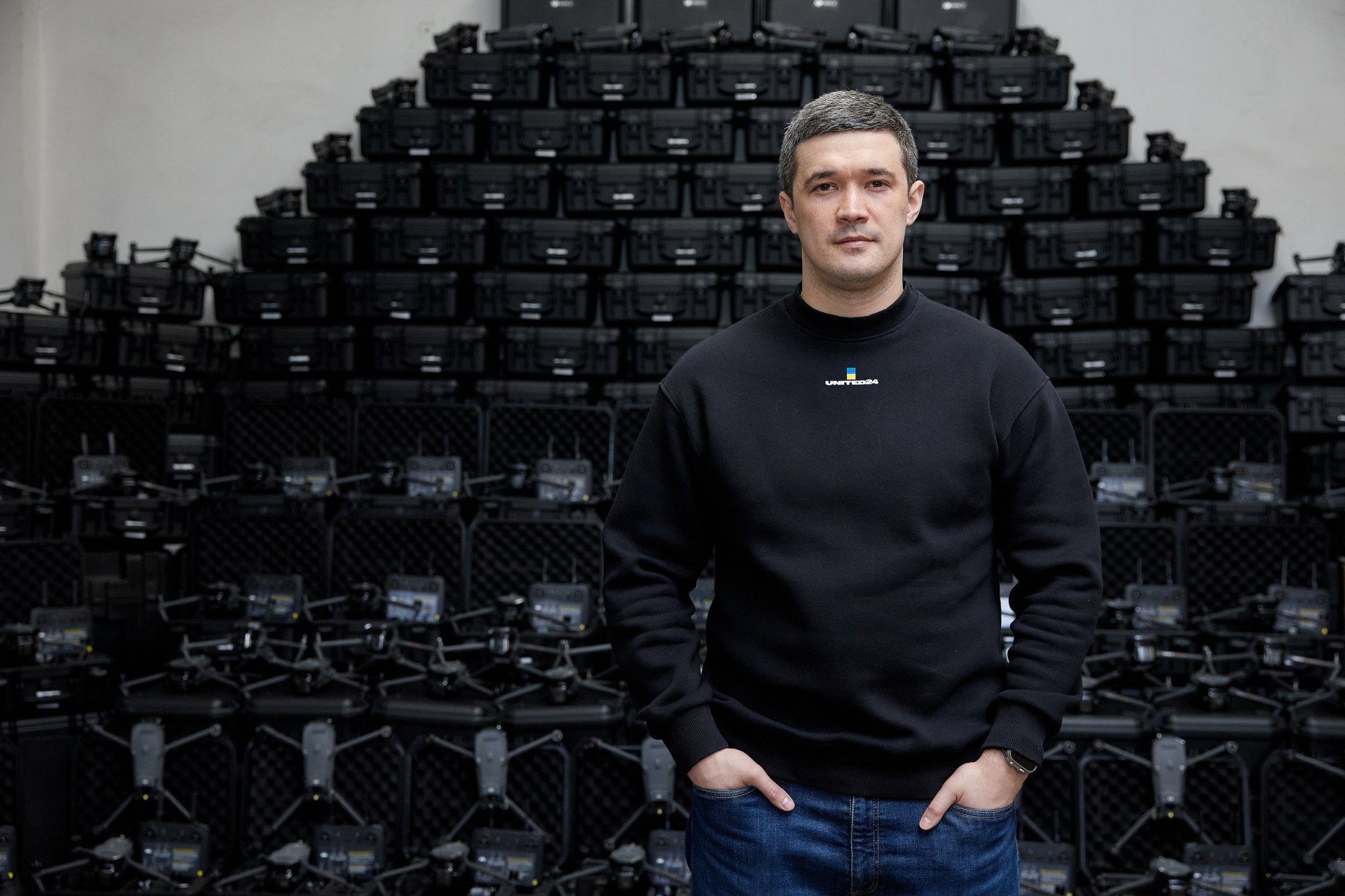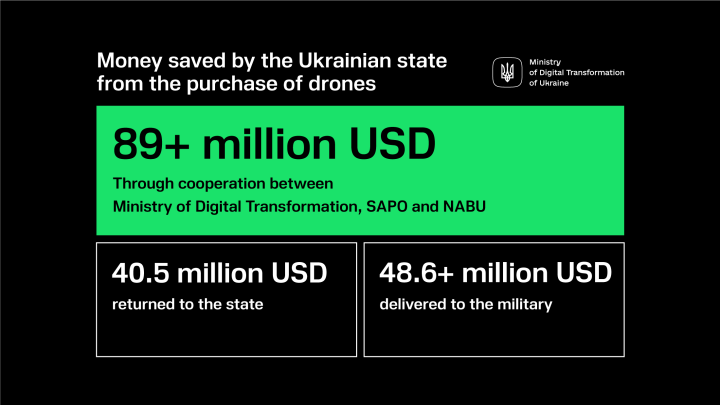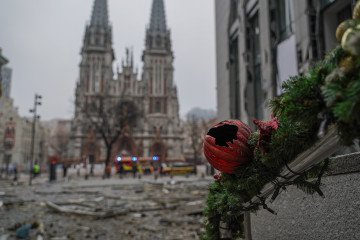- Category
- Opinion
How Ukraine Saves on UAV Purchases and Makes the Contracting Process Transparent

Recently, President Volodymyr Zelenskyy announced that the state has already contracted 1 million drones. This was the target for 2024, but it was achieved in August.
A true technological revolution in Ukraine began with the Army of Drones, which not only spurred the development of the UAV market but also the entire defense-tech sector. As a result, 96% of the drones purchased by the state are of Ukrainian production. In other words, Ukraine is actively fighting with its own innovations. Back in 2022, only 7 UAV models had state contracts, but this year, over 100 Ukrainian developers are producing drones for the Armed Forces of Ukraine (AFU).
Overall, around 500 companies in Ukraine are involved in producing UAVs, services, or related products. This is the result of changed policies, the effects of a market economy at work. We have adopted over 20 revolutionary regulatory acts, eliminated unnecessary permits, increased contribution margin, and changed policies so that Ukrainian manufacturers can scale up.
In parallel, it was essential to ensure maximum transparency in state procurement and make sure that manufacturers profit while the state buys drones at the most advantageous prices.
From the first state contracts, we started cooperating with anti-corruption bodies such as the Specialized Anti-Corruption Prosecutor's Office (SAP) and the National Anti-Corruption Bureau of Ukraine (NABU). We provided access to the CRM system, which displays all data on drone procurements made by the State Service on Special Communications and Information Protection within the Army of Drones initiative. The system contains information about the manufacturer, the cost of the UAV, and contract details.
On August 9, NABU published a report on the savings made on UAV purchases for the army. Thanks to cooperation with anti-corruption bodies, the state managed to save over 3.3 billion UAH (89+ million USD.) Additionally, the military received 18,413 drones worth over 1.8 billion UAH (48.6+ million USD.) without increasing the cost of existing contracts. The remaining funds—nearly 1.5 billion UAH (40.5 million USD)—were returned to the state by reducing prices without decreasing the number of ordered drones.

How does it work? In March 2023, the government adopted a resolution that increased profitability for Ukrainian companies from 1% to 25%. Ukrainian manufacturers thus gained the ability to earn more than in NATO countries, where profitability is 17%. In market conditions, the cost of goods can fluctuate, and thus the actual margin changes. Considering a letter from NABU, the government adopted a resolution requiring manufacturers to clarify how prices were calculated if profits exceed 25%. After recalculating, companies must either return the difference to the budget or supply additional drones.
What changes were implemented?
All drones are purchased according to the needs of the Security and Defense Forces. This means that all UAVs purchased within the Army of Drones correspond to military requests and are needed for specific combat tasks on the front line.
Every UAV undergoes mandatory official price evaluation. The government approved a resolution requiring every domestically produced drone to undergo a price evaluation to ensure that UAVs are purchased at relevant prices.
A CRM system was introduced for all UAV contracts. This allows for real-time viewing of contract details and the status of all procurements. Anti-corruption bodies have access to the system, ensuring transparency and accountability in procurement.
The SAP management system was implemented. It reflects the processes of contracting, delivery, and shipment of drones to the Defense Forces. This allows managing delivery timelines and tracking the status of drone transfers from the manufacturer to the front lines.
A supply chain was created. On NABU's recommendation, a team was formed to handle pricing in the drone sector. In collaboration with journalists and NABU, it researches the fair price of Ukrainian-made drones. This way, the state can purchase drones at the most advantageous prices, and the military can receive more UAVs.
We have developed a procurement process for drones, and now the same approach is being applied to procurements of electronic warfare (EW) and robotic platforms.
Another revolutionary decision was procurement through Prozorro. In February, the government adopted a resolution allowing mass drone procurement through the Prozorro system. The state began conducting tenders for Mavics, Autels, Matrices, and other mass-market drones. This creates competition among suppliers, speeds up procurement, and allows drones to be purchased at the most advantageous prices. Prozorro makes information about drone configurations available to everyone, while sensitive information about suppliers and the procurement amount remains hidden for security reasons.
The next logical step is to extend this resolution to Ukrainian-made drones. The government adopted the resolution in July, and on August 1st, the first tender was announced for the procurement of Ukrainian FPV drones through a closed Prozorro module. Developers who produce advanced drones using machine vision for target guidance can apply.
Following the same rules that governed the development of the UAV market, we have opened up the market for electronic warfare systems and ground-based robotic platforms. Now the focus is on missiles. The President has already announced the start of a missile program. We have developments in this area, but we cannot publicly disclose them yet. Therefore, we continue to search for the next technological game-changer, as drones once were.

-c42261175cd1ec4a358bec039722d44f.jpg)
-46f6afa2f66d31ff3df8ea1a8f5524ec.jpg)

-7e242083f5785997129e0d20886add10.jpg)
-cc5860059e044295cd5738becdb4e387.png)

-e27d4d52004c96227e0695fe084d81c6.jpg)
